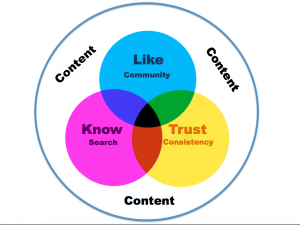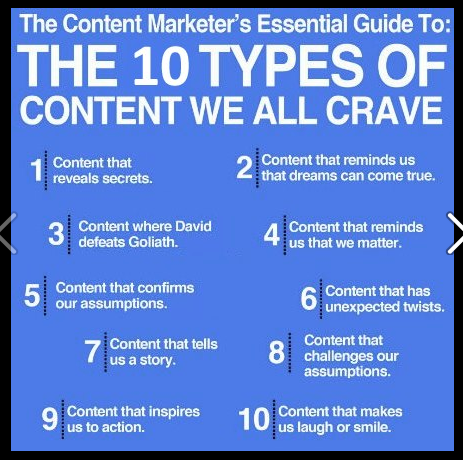Have we lost the art of storytelling in marketing?
November 5, 2012
As the buzz about content marketing, social media and all things digital continues to rise, one of the catch phrases that gets a lot of attention is storytelling in marketing. We afford it incredible lip service but do we actually practice it?
As we give way to our USA Today sound byte style of sharing information, are we losing the emotional tug of telling a great story? Even in our case studies where we’re trying to help the prospects see themselves in relation to someone we’ve already helped — are we too focused on the facts and too willing to sacrifice that emotional tug?
I worry that we are so focused on making sure we communicate the facts that we don’t trust your audience enough to find them if they’re wrapped in the emotion of the brand. The danger of that is that buying is an emotional response. We buy based on our emotions and justify the purchase with the facts offered. But we very rarely buy on facts alone. So it we don’t offer up both sides of the equation — we leave our prospects wanting and our cash registers empty. Storytelling in marketing isn’t just to entertain or be memorable. It is to drive brand loyalty and increased sales.
What made me ponder this on a Sunday morning is a local phenomenon that put the spotlight on the potency of storytelling for me. A Dunkin’ Donuts opened up in my community (we may be one of the few cities in the country that didn’t already have one) and the line on opening day was literally around the block. Seriously — who stands in line for an hour for a donut?
Well, they did. And when I thought about the brand…I too had a very warm reaction to it. When I hear “Dunkin’ Donuts” my mind immediately goes back to the wonderful story driven TV spots they did back in the early 80s.
They used a character (Fred the Baker) to tell the audience why Dunkin’ Donuts were better — fresher, more variety and certainly made with more love. I still crack up when I think of Fred in his dress, covering up his mustache, trying to get some competitive intelligence.
[youtube]http://www.youtube.com/watch?v=BwO4B_pxI7s[/youtube]
That’s great storytelling. I not only learn that Dunkin’ Donuts bakes their donuts all day so they’re always fresh, but I learn about the variety (5 kinds of jelly donuts) and their commitment to quality. And it was funny to boot.
On the flip side of the emotional scale, there are few brands that tug at the heartstrings with their TV spots like Hallmark and Folgers. Very different products but the same link to family and special times. Check out these spots and see how you react to both the story and the brand.
[youtube]http://www.youtube.com/watch?v=I4kNl7cQdcU[/youtube]
[youtube]http://www.youtube.com/watch?v=37-r7Jtru8E[/youtube]
If you look at the dates on these spots — you’ll see that they’re all more than 20 years old. I’m hard pressed to think of a company today that takes the time to tell the same sort of story (Budweiser may be the exception) today — in any media.
So here are some questions I’m pondering and wonder what you think:
- Has this sort of storytelling become passé?
- Are their any brands out there today who do this sort of storytelling in any media?
- Does social media and content marketing really lend itself to good storytelling?
- Do we need to go “old school” to really work storytelling into our marketing efforts?
- Are we equating storytelling to factual case studies rather than emotionally triggering customer stories?
- Is there a current brand that is really using storytelling to create an emotional connection with their audience?
- How can we better marry the digital marketing tools with the age old art of telling compelling stories?
Storytelling in marketing is hardly new. But it’s as effective today as it was when David Ogilvy and the other patriarchs of our field wove their compelling tales. The question is — how good are we at marrying the old and the new?
More







